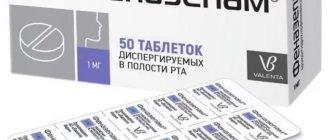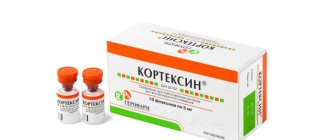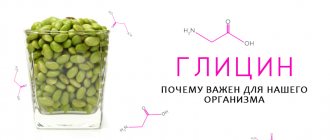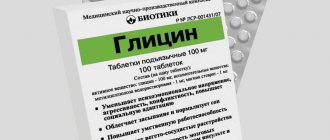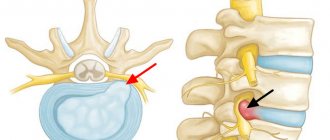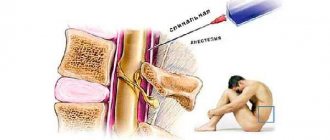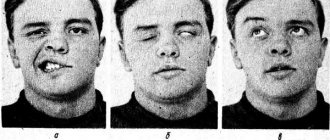Why doesn't antidepressant work? Typical mistakes.
What are antidepressants?
New generation antidepressants are a special group of psychotropic drugs that never, under any circumstances, cause either drug dependence (this risk exists only with the incorrect use of tranquilizers), or prolonged lethargy, emotional flatness, or a decrease in clarity of consciousness, memory, attention, or mental activity. (these negative effects are possible when using antipsychotics and tricyclic antidepressants of the previous generation). The vast majority of neurotic psycho-emotional disorders that are treated by a psychotherapist are successfully treated with one well-prescribed antidepressant. The cause of failure, as practice shows, is not the drug itself, but mistakes made during its use.
What are new generation antidepressants?
New generation antidepressants, or serotonin-selective antidepressants, belong to the group of SSRIs - selective serotonin reuptake inhibitors. They are ideally tolerated and do not have cardio-, nephro- or hepatotoxic effects, i.e. do not have a negative effect on the liver, kidneys, heart and other organs, many of them are widely used in childhood and old age, with concomitant physical diseases, in the post-infarction and post-stroke periods, in combination with other therapeutic agents. In Western countries, modern antidepressants are increasingly positioned as drugs that improve the quality of life, since they allow you to maintain a long-term and stable sense of inner comfort, resistance to stress and a positive attitude in life.
How does an antidepressant work?
Simply put, the effect of an antidepressant is manifested by the fact that the brain comes out of the stressful mode of functioning - anxiety decreases, internal tension is relieved, mood improves, irritability and nervousness disappear, night sleep normalizes, the autonomic nervous system stabilizes - for example, palpitations, dizziness, headaches stop, fluctuations in blood pressure, emotionally caused disorders of the stomach, intestines, etc. This is achieved by restoring the proper functioning of brain neurotransmitters - serotonin, norepinephrine, dopamine and other protein molecules that ensure the transmission of electrical impulses between neurons. This takes time, so the effect of modern antidepressants develops very gradually, manifesting itself no earlier than 3-5 weeks from the start of taking the drug. The full final effect highly depends on: 1) the correct choice of drug, 2) the correct selection of dosage, 3) the correctly determined duration of treatment; 4) correct cancellation. Violation of even one of the points can lead to the ineffectiveness of the entire treatment, and such cases are widely discussed by patients who unjustifiably consider the drug itself to be the cause of failure.
How to take an antidepressant correctly?
Treatment with antidepressants consists of two main stages:
1) the main one, during which all symptoms of depression, anxiety neurosis or autonomic dysfunction must disappear (the use of an antidepressant does not mean that the patient’s problem is specifically or only depression);
2) supportive, preventive (or control), during which it is absolutely necessary to continue treatment in the complete absence of symptoms and the patient’s ideal state of health. Moreover, only under this condition does maintenance treatment make sense, otherwise the choice of drug and/or its dosage must be reconsidered.
Thus, if the full effect is absent at the first stage of treatment, then continuing it in a maintenance regimen is pointless and incorrect, since this may cause a decrease in the body’s susceptibility to the action of the drug (resistance, tolerance) and its further ineffectiveness.
How long should you take an antidepressant?
With a competent approach, drawing up a final treatment plan usually requires only 2-3 consultations with a psychotherapist in the first 2-3 months of treatment. The main period of treatment until all symptoms of a psychoemotional disorder are eliminated usually takes 2-5 months. After this, therapy in no case stops, but moves to the maintenance stage, which, in the absence of external aggravating factors (continuing or new unexpected emotional stress, endocrine disorders, somatic diseases, etc.) usually lasts 6-12 months, in In much rarer, but demanding cases, it can last for years.
It is appropriate to compare this situation, for example, with the treatment of hypertension, when long-term or even constant use of a drug that normalizes blood pressure is necessary. No one would think that a hypertensive patient is “addicted” or “accustomed” to a drug that allows him to live with normal blood pressure; everyone understands that long-term treatment is necessary based on the characteristics of the disease. However, even this is an exaggeration: the course of taking an antidepressant in the vast majority of cases is only long-term, and not lifelong.
Let me emphasize once again that a long course of treatment with an antidepressant makes sense not in anticipation of the result, but after it has been achieved, i.e. carried out when the patient is in ideal health.
When can you stop taking an antidepressant?
Termination of treatment with an antidepressant, as well as its initiation, must necessarily be agreed upon with the attending physician and is carried out not so much for medical reasons (especially since the date of discontinuation is not determined by any calendar date), but for socio-psychological indications, i.e. when positive changes consistently manifest themselves not only in the patient’s well-being, but also have a positive impact on the events of his life, for example, lead to a real way out of the negative traumatic situation in which the neurosis arose.
How to properly stop taking an antidepressant?
Withdrawal of an antidepressant should be done gradually according to the plan proposed by the attending physician, and should not be abrupt or sudden, but also overly prolonged. The higher the dosage of the drug, the longer the withdrawal takes, but in any case this period takes no more than a month, otherwise the situation described in paragraph 6 of the section “Antidepressant withdrawal syndrome” is created.
During treatment, unforeseen breaks are undesirable (there should always be a supply of 1-2 packages at home), because 3-4 days after a sudden cessation of taking an antidepressant, a harmless, but subjectively unpleasant withdrawal syndrome is possible, caused not by dependence or addiction to the drug, but by the “unexpected” cessation of its entry into the blood for brain receptors, which often happens also with the abrupt withdrawal of other medicines that are not psychotropic.
In the event of an unexpected break in taking an antidepressant, all manifestations of withdrawal syndrome disappear within the next few hours after resuming its use, and if use is not resumed, they completely disappear within 5-10 days.
With a well-planned withdrawal from an antidepressant, no matter the duration of its use, the withdrawal syndrome, if felt, does not cause any serious inconvenience. Some antidepressants (for example, fluoxetine, vortioxetine) in the vast majority of cases do not cause withdrawal symptoms at all.
What happens after you stop taking an antidepressant?
With proper treatment, after stopping the antidepressant, the effect that was achieved at the main stage of treatment and consolidated at the maintenance stages of treatment will remain in the foreseeable future.
Antidepressant withdrawal syndrome
The widely discussed “consequences” of taking antidepressants (most often they talk about allegedly “getting hooked” on the drug or the inability to stop taking it due to severe “withdrawal syndrome”) can really frighten the patient in the following cases:
1) the drug and/or its dosage were selected incorrectly, as a result, the full therapeutic effect was not achieved at all, only masking of the symptoms of a psycho-emotional disorder occurred, the improvement was partial, the patient’s well-being became “somewhat easier”, but did not change radically and qualitatively;
2) maintenance treatment was carried out with an incomplete therapeutic effect, the patient was not aware of what result should be achieved, and balanced between poor and “acceptable” health, from which, after discontinuation of the drug, health naturally became persistently poor again;
3) maintenance treatment was not carried out at all, the antidepressant was discontinued immediately after achieving the effect, i.e. clearly premature;
4) the patient was not warned by the doctor about possible temporary discomfort lasting 5-10 days (minor nausea, dizziness, lethargy, headache, sleep disturbance) when discontinuing an antidepressant, mistaking these sensations for the resumption of neurosis (detailed description of the sensations that arise during withdrawal syndrome - see here);
5) the drug was discontinued rudely, abruptly, suddenly, without the consent of the doctor, as a result of which the patient was faced with a pronounced withdrawal syndrome, mistaking its symptoms for the resumption of neurosis, or even deciding that he was “used to it”, “addicted to the drug” and was worried "breaking";
6) drug withdrawal was protracted and took an unreasonably long time: faced with the first manifestations of withdrawal syndrome when reducing the dosage, the patient got scared and stopped further reducing it (for example, taking “quarters”, “halves” tablets a day or every other day, or depending on well-being for a long time), thereby artificially keeping oneself in a state of withdrawal syndrome, not allowing it to end, while, as a rule, complaining of extremely severe “withdrawal” from the drug; in some cases this situation can last for months.
Read more about antidepressant withdrawal problems
Which drugs are the new generation of antidepressants?
SSRIs - selective serotonin reuptake inhibitors: fluoxetine (Prozac, fluoxetine-lannacher, apofluoxetine, prodep, profluzac, fluval), fluvoxamine (fevarin, rocona), citalopram (cipramil, pram, opra, siozam), escitalopram (cipralex, lexapro, selectra , Elicea, Lenuxin), sertraline (Zoloft, Asentra, Stimuloton, Sirlift, Aleval, Serenata, Thorin), paroxetine (Paxil, Rexetine, Adepress, Plisil, Actaparoxetine).
SSRI is a selective serotonin reuptake inhibitor of multimodal action - an antagonist of 5-HT3-, 5-HT7-, 5-HT1D receptors, a partial agonist of 5-HT1B- and an agonist of 5-HT1A receptors: vortioxetine (brintellix).
SSRI - selective serotonin reuptake inhibitor, partial agonist of 5-HT1A receptors: vilazodone (viibrid). Vilazodone is currently not available in the Russian Federation.
SSRIs - selective serotonin and norepinephrine reuptake inhibitors: duloxetine (Cymbalta, Duloxent), milnacipran (Ixel).
SSRIs are a selective serotonin, norepinephrine and dopamine reuptake inhibitor: venlafaxine (Effexor, Velaxin, Venlaxor, Velafax, Newvelong, Efevelon).
SSRI is a selective norepinephrine and dopamine reuptake inhibitor: bupropion (Wellbutrin, Zyban). Bupropion is currently not available in the Russian Federation.
SNRI - selective norepinephrine reuptake inhibitor: reboxetine (Endronax). Reboxetine is currently not available in the Russian Federation.
SSRIs - serotonin reuptake inhibitors, 5-HT2 receptor antagonists: trazodone (desirel, oleptro, trittico, azone), nefazodone (serzone). Nefazodone is currently not available in the Russian Federation.
Tetracyclic antagonist of central presynaptic α2-adrenergic receptors: mirtazapine (Remeron, Calixta, Mirzaten, Mirtazonal).
Melatonin receptor stimulator - agomelatine (Valdoxan).
Note: international names (active ingredients) of new generation antidepressants are in bold ; in italics - trade names of original drugs; others given in brackets are trade names of some generics/analogues produced by various pharmaceutical companies. The trade names of new generation antidepressants currently sold in pharmacies in the Russian Federation (strictly by prescription) are highlighted with a blue background. The last antidepressant on the list, agomelatine (Valdoxan), according to some sources, does not have the proven effectiveness declared by the manufacturer and does not exclude hepatotoxicity.
The detailed mechanisms of brain activity of antidepressants (including their previous generations), in my opinion, are most adequately and popularly covered in a series of video lectures on psychopharmacology by Nikita Viktorovich Kudryashov, associate professor of the First Moscow State Medical University. THEM. Sechenov, senior researcher at the Research Institute of Pharmacology named after. V.V. Zakusova:
“Basic pharmacology of antidepressants: basic pathophysiology of depression. Part 1. (Beginning)
“Basic pharmacology of classical antidepressants. Part 2."
“Basic pharmacology of antidepressants: monoamine reuptake inhibitors. Part 3."
“Basic pharmacology of antidepressants with a mixed mechanism of action. Part 4. (End)"
Part one, in which we look with amazed children’s eyes and understand nothing at all
There have always been many questions about antidepressants. Unlike “ordinary” medicines, you can’t understand them with your mind, you just have to believe. For example, all antidepressants begin to act only in the second week of use. Traditionally, guidelines explain this by saying that “the medication accumulates during this time.” But what does “accumulate” mean? After all, the drug either acts immediately or does not act at all. All other psychotropic substances act almost immediately. Sleeping pills work immediately. Tranquilizers work immediately. Neuroleptics, mood stabilizers, anticonvulsants, stimulants - they all begin to act quickly. And “stubborn” antidepressants - only after two weeks. The question is, why?
For an explanation of some terms from the field of psychopharmacology, see the Glossary at the end of the article. - Ed.
Figure 1. Advertising for Thorazine (trade name for chlorpromazine in the United States) recommends the use of the drug for schizophrenic delusions and hallucinations.
Antidepressants improve the emotional state of patients with depression and do not affect the mood of healthy people. It is not normal. If a substance has a psychoactive effect, it has the same effect on both pathological and physiological processes. If you give a person suffering from insomnia a sleeping pill, he will fall asleep. And if you give sleeping pills to a healthy person, he will fall asleep in the same way. If an anxious and agitated patient is given a benzodiazepine tranquilizer, the person will calm down and become quiet. What about an ordinary person? The same thing - the person will calm down and calm down. The “old evil” classic neuroleptics (the same chlorpromazine - “Aminazine”) are still indispensable for acute psychoses: in fact, they have a carpet bombing effect on the rebellious brain, stopping mental activity through a break in dopamine transmission.
And if a healthy person is tied up and injected with neuroleptics, then the same thing will happen to his mental processes - the brain will turn into a scorched desert. But with antidepressants the picture is completely different. They have an effect on a depressive mood background, but not on a normal one. A healthy person will only experience side effects, but no change in consciousness. So how does the pill know which person is depressed and which isn't?
A key symptom of depression is decreased mood. This in itself is not a problem: there are a lot of substances that quickly and guaranteed elevate your mood - for example, a 40% solution of ethyl alcohol or psychostimulants, and they will take effect not after two weeks, but from the very first dose. Why then does medicine not use them? The fact is that they absolutely do not help with depression: neither alcohol nor amphetamines have an antidepressant effect, no matter what people say. And antidepressants - such as serotonin reuptake inhibitors Prozac, Zoloft, Paxil, Cipramil - help. Why?
Molecular basis of psychoses
An increase in the flow of dopamine and, to a lesser extent, serotonin is associated with the development of psychosis. According to the dopamine hypothesis of schizophrenia, the antipsychotic effect of antipsychotics is explained by their ability to block dopamine receptors. However, since there are many varieties of these receptors in the brain and they perform a wide variety of functions, it is impossible to completely silence them all, as classic antipsychotics (aminazine, haloperidol, chlorprothixene and others) do - there will be a lot of unpleasant side effects. Therefore, modern atypical antipsychotics selectively block certain types of dopamine and serotonin receptors, and they have much fewer side effects.
Symptoms of depression
The main symptom of clinical depression (or major depressive disorder) is a persistent decrease in emotional background, which cannot be reduced to simply a “bad mood”, which any person can have. Clinical depression is an illness that has clear criteria and is described by a whole bunch of symptoms. Depression manifests itself in low mood, feelings of guilt and hopelessness, loss of interests and pleasure, decreased energy, and as a result increased fatigue and decreased activity, all of which must persist for at least two weeks.
Monoamine oxidase (MAO)
This is an enzyme involved in the destruction of monoamines (more precisely, the catabolism of monoamines through oxidative deamination). Monoamines include a lot of endogenous hormones and neurotransmitters, including all those that interest us: dopamine, adrenaline, norepinephrine, serotonin and histamine; as well as exogenous psychoactive substances (for example, phenylethylamine and narcotic substances derived from it).
MAO is one of the key enzymes in the human brain, and there are about forty related proteins in the monoamine receptor family. If MAO is blocked, monoamines will stop being destroyed and will begin to accumulate in the synaptic transmission system, which is not always good. Therefore, even modern selective MAO inhibitors - very powerful antidepressants - are quite dangerous to use and are allowed only in a hospital setting, where there is constant monitoring and control over the patient’s condition.
Dictionary
Psychopharmacology is the branch of medicine that deals with psychotropic drugs. Strictly speaking, the first were lithium preparations, which appeared in the 40s. But the generally accepted beginning of the era of psychopharmacology is the discovery of chlorpromazine (aminazine). Antidepressants are medications prescribed for depression and anxiety disorders. The most well-known groups of them are tricyclic antidepressants (for example, amitriptyline) and selective serotonin reuptake inhibitors (for example, Prozac). Amitriptyline is the most popular and famous antidepressant. A classic representative of the group of tricyclic antidepressants. Still in use today. Fluoxetine (Prozac) is the first selective serotonin reuptake inhibitor (SSRI). This name became a household name and entered into mass use. Prozac is good, first of all, not even because it is highly effective (in this regard, the old tricyclic antidepressants are still superior to it), but because it is well tolerated. SSRIs have made treatment available to the mass outpatient population. Of course, this immediately led to many excesses and abuses. Antipsychotics are drugs that have antipsychotic activity. With reservations, A. can be considered a synonym for the word “neuroleptic”, however, neuroleptics are a very clearly defined class, among them there is the so-called. “minor neuroleptics” (also known as “behavior correctors”), which actually have antipsychotic activity to a very moderate extent. Neuroleptics are potent antipsychotic drugs. Aminazine is the very first and most famous antipsychotic, the “gold standard”. In terms of potency, all other antipsychotics are measured in “chlorpromazine equivalent.” Phenothiazine is a heterocyclic compound, derivatives of which are widely used in medicine as neuroleptics, antihistamines and antiarrhythmics. Mood stabilizers are drugs that stabilize the emotional state and mood, eliminate mood swings and return behavior to normal limits (for example, lithium drugs). Psychotropic substances are any chemical compounds that affect mental processes. This phrase is often used as a synonym for drugs, but this is not entirely true. Psychopharmacological drugs are psychotropic substances. Caffeine (aka theine) is also a psychotropic substance. Stimulants are substances with a psychostimulating effect, almost all of which are prohibited for use. The classic representative is amphetamine. Tranquilizers are psychotropic drugs with a sedative, inhibitory, suppressive and hypnotic effect. In the classical sense, “major tranquilizers” are neuroleptics, but now tranquilizers are almost always understood as “minor tranquilizers,” that is, anti-anxiety, sedative and hypnotic drugs - first of all, this is a group of benzodiazepines (the most popular among which are phenazepam and diazepam) . Chlordiazepoxide (Elenium) is the first benzodiazepine tranquilizer. Currently, it is practically not used, since it has been replaced by subsequent drugs. Diazepam is the most popular benzodiazepine. The most popular tranquilizer and psychotropic drug in general. A classic non-nodiazepine tranquilizer, with all the pros and cons of its class. Acute psychoses are rapidly developing mental disorders. “Madness” or “insanity” in the common sense. GABA (γ-aminobutyric acid) is the main inhibitory neurotransmitter in humans. fMRI (functional magnetic resonance imaging) has made it possible to study the activity of living nervous tissue. The introduction of fMRI technologies has determined the progress of neuroscience in the last decade. The monoamine theory of action of antidepressants suggests that their medicinal effect is achieved through the specific blockade of certain receptors for monoamines - serotonin, norepinephrine, dopamine. The neuroplastic model does not negate the monoamine model, but evolutionarily develops and complements it. The neuroplastic model is one of the hypotheses for the mechanisms of action of antidepressants. It is assumed that their medicinal effect is achieved by influencing the processes of synaptic plasticity and the growth of neuronal terminals.

